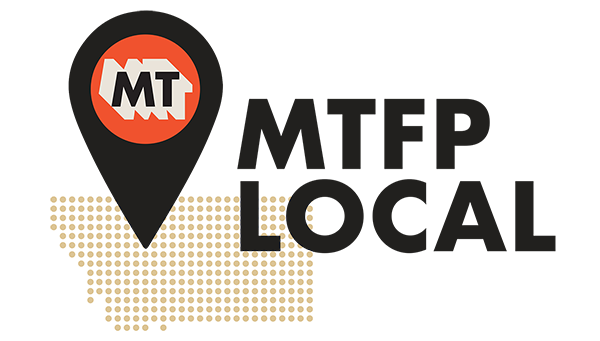After three years of congested trailheads, crowded restaurants and packed hotels, Montana tourism officials say this summer might be a little calmer as the state’s pandemic-fueled travel boom starts to level out into something closer to normal.
While the state remains a popular tourist destination — especially places like Glacier and Yellowstone national parks — advance hotel reservations are slightly down this year in destinations like the Flathead Valley. Officials attribute that to a number of factors, including rising costs and the end of the COVID-19 emergency, which means people have more travel options than they did just a few summers ago.
“I think it’s because the rest of the world is opening up,” said Julie Mullins, executive director of Explore Whitefish. “The pandemic made people want to be outside, and so places like Whitefish and Glacier National Park saw a huge increase in visitation because of that. But now people feel more comfortable going to cities, and they can travel internationally again.”
Mullins said that in the summer of 2019, Whitefish’s hotel occupancy rate (calculated by dividing the total number of occupied rooms by the total number of rooms available) ranged between 75% and 85%. In 2021, the occupancy rate in June, July and August ranged from 80% to 85%. In 2022, it dropped slightly to pre-pandemic levels of 70% to 80%. Mullins said that trend will likely continue this year.
Short-term rental reservations, like Airbnb and Vrbo, are also down slightly, Mullins said. Since the pandemic, the number of homes available for short-term rentals in the 59937 zip code (Whitefish and the immediate surrounding area) has skyrocketed, from 2,100 in 2019 to 3,300 in 2022.
“It’s still going to be a great summer, but I think it will be flat,” she said.
“The pandemic made people want to be outside, and so places like Whitefish and Glacier National Park saw a huge increase in visitation because of that. But now people feel more comfortable going to cities, and they can travel internationally again.”
Julie Mullins, executive director, Explore Whitefish
Daryl Schliem, CEO of the Bozeman Area Chamber of Commerce, said a similar story is developing in Gallatin County. As in the Flathead, Bozeman area hotel occupancy rates spiked in 2021 and 2022 when outdoor recreation remained a major draw for tourism and Montana was high on people’s list of destinations.
Data from Bozeman’s airport reflected that as well. Right before the pandemic, Bozeman Yellowstone International Airport saw nearly 800,000 passengers annually. That dropped to below 500,000 once the pandemic hit, but quickly rebounded in 2021 and 2022, hitting well over 1 million boardings. This year, the growth is expected to continue but not at the same rate, with an estimated 1.2 million enplanements for 2023, according to data from the airport.
Schliem said he expects tourism to continue to grow in the state by 4% or 5% annually. That’s not the type of growth that was seen over the last few years, but is on par with what the state experienced before 2020.
In 2022, 12.5 million nonresidents came to the state, spending more than $5.8 billion, according to the University of Montana’s Institute for Tourism and Recreation Research. Tourism supports 43,900 jobs in the state, and 1 in 13 Montana workers are supported by out-of-state travelers.
The national parks were a big driver of visitation in recent years, with Glacier hitting more than 3 million visitors in 2021 and 2.9 million in 2022. Yellowstone hit 4.8 million in 2021 and 3.2 million in 2022 (despite parts of the park being closed due to flooding).
While American travelers begin to look elsewhere for their vacations, Schliem said he thinks the number of international travelers to Montana will start to increase as travel restrictions are eliminated.
“I don’t think we’ll see a full recovery of international travel this year, but I think it will make up for the Americans who are going elsewhere,” he said.
One part of the state that isn’t expecting a ton of change is Missoula. Barbara Neilan, executive director of Destination Missoula Convention & Visitors Bureau, said the Garden City didn’t see the same spike that places like Bozeman and the Flathead saw over the last few years. Neilan said that’s probably because Missoula isn’t as well tied to iconic outdoor recreation destinations such as Glacier and Yellowstone. In 2018 and 2019, Missoula’s annual average hotel occupancy was at 64%. But in 2022, it was at 61%. During the summer months, that occupancy rate can be between 84% and 88% and Neilan expects similar numbers this year.

In-depth, independent reporting on the stories impacting your community from reporters who know your town.
LATEST STORIES
Ghost Candidates and the Money-Go-Round
PLUS: Obstruction or protection? The Sharyl Allen question.
Attorney General Knudsen accused of soliciting ghost competitor for campaign finance purposes
Incumbent Attorney General Austin Knudsen and his opponent in the GOP primary face political practices complaints following reports that Knudsen acknowledged recruiting an opponent so he could accept larger donations.
Why Gianforte’s reelection bid has drawn a challenge from the right
Greg Gianforte is stumping as a pragmatic conservative in an election year dominated by culture war issues. That’s helped earn him a challenge from the GOP’s right flank.

